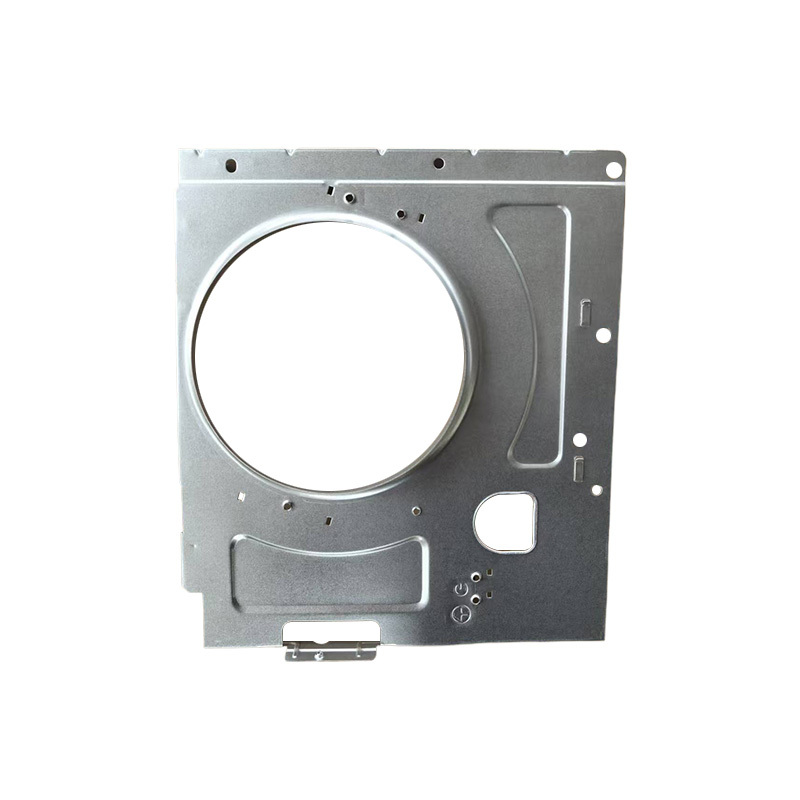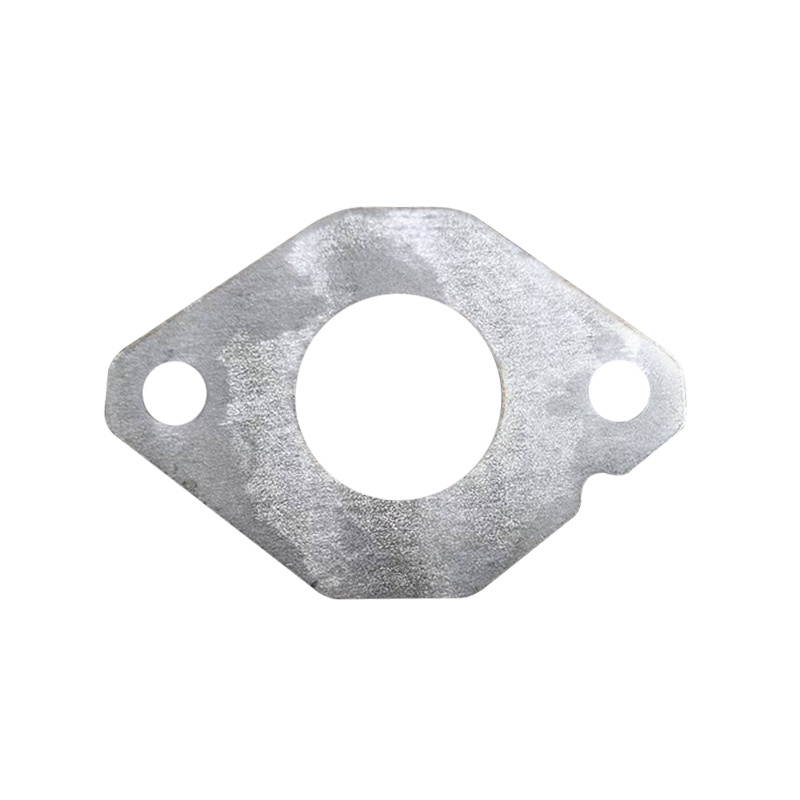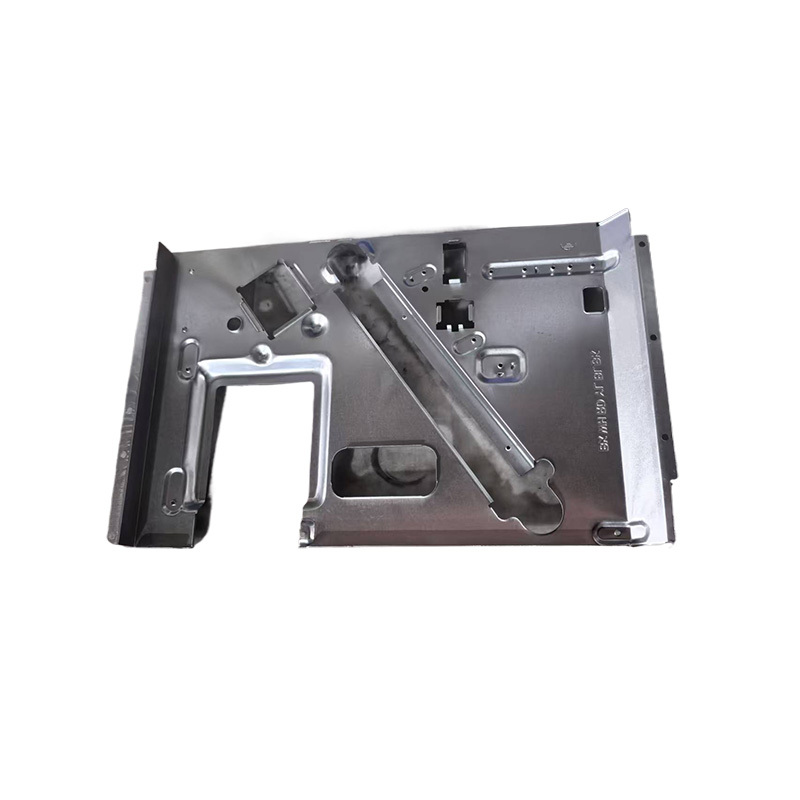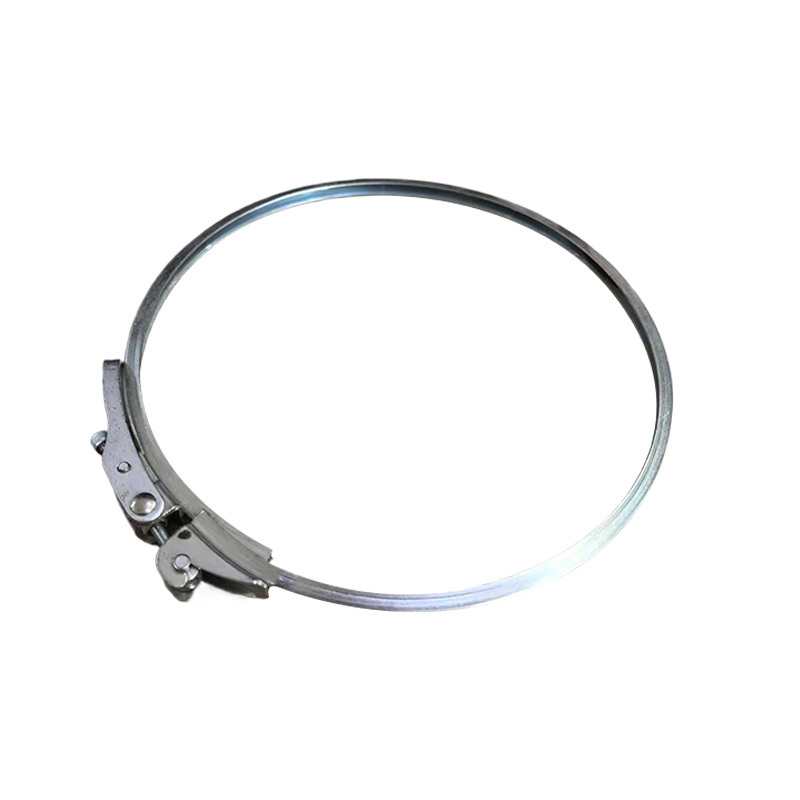Headlight crossbeam reinforcement plate
- Commodity name: Headlight crossbeam reinforcement plate
- Product Description
-
Definition and Purpose
The headlight beam reinforcement plate is an important component in the vehicle body structure, usually located near the headlight installation area at the front of the vehicle, in conjunction with the headlight beam. Its main function is to strengthen and stabilize the headlight beam, enhancing its structural strength and rigidity, thereby ensuring the stability of the headlight installation during vehicle operation. This allows the headlight to maintain its set position accurately, avoiding loosening or displacement due to vehicle vibrations, collisions, or other external forces. It also helps improve the overall structural impact resistance of the front part of the vehicle during collisions.
Structural Composition
Plate Body:
The main part of the headlight beam reinforcement plate is generally a metal plate, often made of high-strength steel materials such as high-strength low-alloy (HSLA) steel. This is because the front part of a vehicle may face various complex stress situations during operation, requiring materials with sufficient strength to cope. The shape of the plate body is determined by the specific design of the vehicle and the profile and installation requirements of the headlight beam. It is usually not a simple geometric shape and may have various bends, curves, and holes as structural features. For example, to better fit the headlight beam and connect with surrounding body components, the plate body may have specific angled bends to tightly wrap or support key areas of the beam.
Its thickness is also determined based on factors such as vehicle class and purpose. Generally speaking, heavy-duty vehicles or those emphasizing off-road performance and requiring higher structural strength will have relatively thicker headlight beam reinforcement plates to withstand greater external forces.
Connection Parts:
Includes multiple parts for connecting with the headlight beam, vehicle frame, and other related components. Common connection methods include welding and bolting. The welding quality must be ensured at welded joints; welds should be firm and smooth to avoid defects that could affect connection strength and overall performance. When connecting with the headlight beam, precise positioning through welding or bolting ensures that the reinforcement plate closely fits with the beam, forming a solid overall structure. Similarly, connections with the vehicle frame must strictly follow design requirements to effectively transfer forces from the headlight beam to the main body structure of the vehicle, enhancing stability in the entire front structure.
In addition, the design of connection parts also considers ease of assembly and maintainability. For example, bolted connections will leave adequate operational space for workers during vehicle production assembly processes and facilitate disassembly and replacement in case of component damage during subsequent vehicle use.
Reinforcement Structure:
To further enhance the strength and rigidity of the reinforcement plate itself, various reinforcement structures are often designed on it. For instance, rib plates and stiffeners can be distributed along the length or width of the plate body or arranged in a grid pattern at key stress points. Rib plates are generally thin structures that protrude from the surface of the plate body, while stiffeners may be line-shaped protrusions. They change how forces are distributed across the plate body so that forces concentrated in certain areas can be more evenly dispersed, thus improving resistance against external forces (such as impact forces during collisions or vibrations during operation) and preventing local deformation or damage to the plate body.
Classification Methods
Classified by Vehicle Type:
Sedan Headlight Beam Reinforcement Plate: The design of sedan headlight beam reinforcement plates focuses more on coordinating with the overall body shape and ensuring precise installation and stability of headlights. Since sedans typically operate on relatively smooth urban roads, their reinforcement plates emphasize optimizing headlight fixation effects and protecting front structures in general collision situations. The structure may be relatively refined, with dimensions and thickness varying according to different sedan classes (such as compact sedans, mid-size sedans, luxury sedans), generally being compact yet lightweight while still possessing sufficient strength to meet usage requirements.
SUV Headlight Beam Reinforcement Plate: SUVs face more complex road conditions such as off-road terrains and bumpy surfaces, requiring higher strength for their front structures. Their headlight beam reinforcement plates are usually thicker with richer reinforcement structures to ensure that headlights remain securely installed even under severe vibrations or minor collisions (such as hitting branches or rocks during off-roading) while maintaining overall structural integrity at the front. Additionally, SUV headlight beam reinforcement plates often need to adapt to their wider and sturdier body shapes and headlight layouts, differing from those of sedans.
Truck Headlight Beam Reinforcement Plate: As heavy-duty vehicles, trucks have extremely high strength requirements for their headlight beam reinforcement plates. They must ensure stability for headlights during long-distance travel and heavy loads while also being able to withstand significant impact forces during collisions to protect both headlights and front structures safely. Therefore, truck headlight beam reinforcement plates generally use thicker high-strength steel materials with larger dimensions; their structures are more complex with more robust connections that present a heavy-duty characteristic suitable for trucks' high-intensity operating conditions.
Classified by Connection Method:
Welded Headlight Beam Reinforcement Plate: This type of reinforcement plate is primarily connected to the headlight beam and vehicle frame through welding processes. Welded connections provide very high connection strength, tightly integrating the reinforcement plate with other components to form a stable structure. In automotive production processes, welded headlight beam reinforcement plates are often used in areas where overall structural strength is critical and frequent disassembly is not required; however, their drawback is that once welding is completed, subsequent repairs can be relatively complex if issues arise.
Bolted Headlight Beam Reinforcement Plate: This type relies on bolts and nuts to secure the reinforcement plate in place. Its advantage lies in ease of installation and disassembly, facilitating assembly during vehicle production as well as allowing for quick replacement if damage occurs later on. Although individual bolt connection strength may not match that of welding, reasonable bolt layout and torque control can still meet vehicle usage requirements while allowing flexible adjustments for installation precision based on actual needs; this method is commonly used in models or component combinations where maintainability is highly valued.
Mixed connection headlight beam reinforcement plate: This method uses both welding and bolted connections simultaneously, combining the advantages of both. For example, key parts of the reinforcement plate are first securely connected to the headlight beam through welding to ensure the basic strength of the overall structure, and then other parts are connected with bolts for easier adjustment, maintenance, and installation with other related components. This connection method is also widely used in modern automobile manufacturing, better balancing structural strength and operability among various needs.
Key words:
Product inquiry
If you are interested in our products, please leave your email, we will contact you as soon as possible, thank you!
Related Products
OEM
From precise design drawings, to rigorous production processes, to strict quality testing, we always uphold the spirit of ingenuity, the pursuit of every detail of the perfect. Our team has a wealth of industry experience and technical strength, according to your specific needs, to provide personalized customized services, to ensure that each product can meet your expectations.











